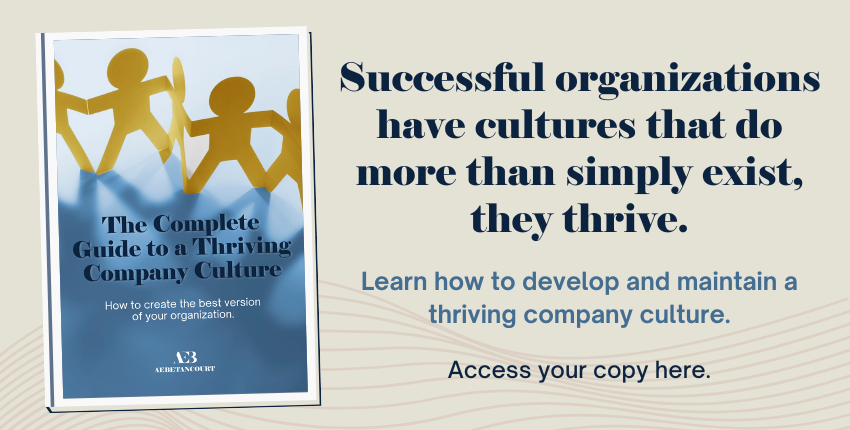We make changes all the time without too much thought or effort. We change our workout routines, cell phone carriers, and paint colors in our homes. We’ll even change the way we take our requisite morning cup of coffee with relative ease. However, start talking about work or business adjustments, especially anything related to employment, and you’ll likely get some hesitation and questioning looks. Introduce an alternative that requires more involvement and resistance builds. Why? There is a real and fundamental difference between making workplace changes and implementing a business transition.
This difference is more than just a recommendation that change is not a good synonym for transition. The reason has to do with the impact on those involved. Have you ever considered why feelings of anxiety and dread bubble up when something new and vastly different in work or business is introduced? And since change is perhaps the only constant in business, can leaders help their employees comfortably navigate these transitions?
Keep reading as we explain the nuances and provide ways to effectively guide your employees through these progressions. Don’t worry, you won’t need a deep understanding of psychology to put this into perspective.
Why Change is Not Synonymous with Transition
William Bridges, Ph.D. is perhaps still the foremost authority on organizational change management. Bridges explained that while similar, there is a clear difference between a change in the workplace and a business transition. A change reflects a shift or exchange of one thing or method for another. We make modifications and introduce a new workplace policy. We gain new information or technology and update a procedure. New employees are hired and teams adjust to accommodate a new structure.
Conversely, a transition requires a reorientation in thinking. There is a progression involved from one perspective or situation to another. Mergers, acquisitions, sold companies, and reorganizations are all examples of business transitions.
A change describes a replacement. A transition describes a process. There is an evolution that happens with opportunities for learning and personal growth.
However, business transitions can also be incredibly difficult, especially when they are disruptive and carry too many unknowns for those involved. Bridges described three phases where employees need to let go of something, gain a new perspective, and then accept the new. And this process is not always easy, comfortable, or quick.
Business and career transitions tend to instigate higher levels of anxiety that can come from prior experiences with these situations and fears over possible impacts. Employees associate a great deal of their identity with their professional lives. It is who we are and what we do. So when a business transition threatens to disrupt that, the pending changes are seldom welcome.
Take the Cause Into Consideration
Why your employees are facing a business transition can have a significant impact on how challenging this process may be. One organization may have started as a family business with the current CEO ready to retire. The next generation has been involved for many years already, knows the business operations well, and has a great report with employees. While the business transition has some bittersweet moments, the progression from one generation to the next could be nearly seamless.
However, business transitions set against a merger or acquisition often signal disruption to organizational structure and processes. Typically some positions are absorbed or eliminated, and where employees fit can remain in limbo for uncomfortable periods of time. The progression from letting go of what was to what is will be hardest on those who are released from current positions. Colleagues who remain will have other feelings to navigate across perhaps the widest range of emotions. While relieved their jobs are still intact or even excited at being promoted, they may also feel deep sadness and remorse for those no longer on their teams. Others may even have feelings of resentment toward the leadership managing these transitions.
Somewhere in the middle are less traumatic but equally disruptive transitions in situations where companies might introduce a new software platform, create a new division, or launch a new product line. Leadership isn’t changing and work teams aren’t being reshuffled here. However, how work is being done may be completely different requiring new skills, processes, or technology outside of their expected career path.
Regardless of the reason, there are actionable and effective ways to guide and support employees through significant business transitions that can make the process less jarring and leave your company culture intact.
How to Help Employees Navigate a Business Transition
Just like your employees will progress through the stages of release, adoption, and acceptance during a business transition, your process to help them adapt should take a similar approach with clear actions before, during, and after the transition.
Have a plan
Before you begin a transition, know how you are going to implement it. As a baseline, you will need to consider the timeline, the various stages in the implementation, and how you need to prepare your team. Even more important, is to identify potential roadblocks and delays early and outline how you will manage those. Consideration also needs to be given to how progress and outcomes will be measured and shared. Your goal is to thoroughly explain why a business transition is happening and what it will accomplish.
Provide clarity
Transparency is essential to navigating transitions smoothly. When employees understand the risks and rewards business transitions are easier to understand and accept. Clarity shifts the focus from what could go wrong to the available opportunities ahead. Helping your employees remain in an optimistic mindset makes the transition process easier and less traumatic.
Seek feedback
It is not enough to just listen for comments and to accept only openly raised questions from your team. The more disruptive the transition, the more input you need to gather from your employees. Providing opportunities and avenues for employees to ask questions and express concerns will reduce unnecessary stress and anxiety that are natural with major change and transition.
Listen and act
Take feedback from your employees seriously. How are they feeling and adapting to your business transition? Continue to communicate progress, answer questions and concerns in real-time, and clarify uncertainties. Business transitions require empathic leadership focused on sensing and responding to employee emotions and personal impacts.
Communicate effectively
During a business transition, communication is essential to the point that there really cannot be enough. Sharing with employees what is changing is just as important as confirming what is not changing. This means identifying who will be impacted and how. Be specific. It is also helpful to acknowledge what will be given up, even if there is a better gain for your employees and your organization.
More Wise Advice
Bridges was quick to point out that not everyone is ready to hear breaking news about pending transitions at the same time. This is especially true when business transitions are challenging or include any degree of negative impacts. This is why your message and information need to be communicated in multiple ways and multiple times. When sharing information about a business transition, say it, repeat it, and say it again.
Share what you know. Share what you don’t know yet. Outline the timing, risks, opportunities, impacts, all of it. Then keep the information flowing. Business transitions don’t need to become traumatic events or the source of sudden resignations. Help your employees navigate the maze of transition so that your organization and team become stronger and more competitive on the other side.
For more information about leadership styles and their impact, download our Complete Guide to a Thriving Company Culture below.


.png)






